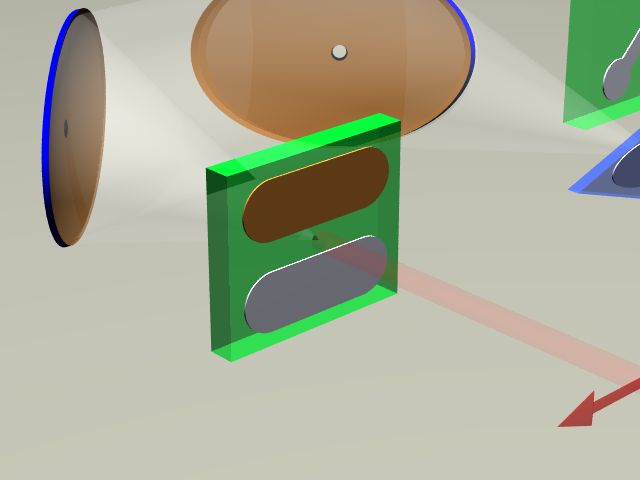Generation of THz Pulses
Possible Methods
Single-cycle THz pulses can be generated using several techniques, including:
- Ultra-fast charge transport (Photoconductive switch)
- Optical rectification
- Surface-field emission
- Photo-dember effect
- Four-wave mixing
Photoconductive switch emission is the most common technique for terahertz pulse generation from low-power lasers systems.[Lloyd-Hughes05] This is due to the large efficiencies and relative low-cost of PCS fabrications. Optical rectifications is used for higher-power systems, or for high-bandwidth mid-infered terahertz generation.[Loffler05]
Ultra-fast Charge Transport
Ultra-fast charge transport is achieved by the use of a photoconductive switch (PCS). THz radiation is generated when electron-hole pairs are accelerated near the surface of a semiconductor by an externally applied electric field. The electron-hole pairs are generated by a femtosecond laser pulse focused upon the surface of the semiconductor in the gap between the two electrodes. A laser pulse width of less than 100fs is appropriate for this. The acceleration of opposite charges in opposing directions gives rise to a changing dipole moment and leads to broadband dipole radiation at THz frequencies.
Detail of PCS
A computer generated image of a photoconductive switch is shown below. The two electrodes form a lateral antenna by which an electric field is applied.

The electrodes are typically Gold or Gold alloy, deposited onto a thin wafer of semi-insulating GaAs or InP. A square wave biasing voltage of approximately 1MV/m is applied across them, at high frequency. By applying an alternating voltage instead of a DC voltage the THz signal is modulated at this frequency. This allows for the use of phase-sensitive 'lock-in' amplifiers which can provide a high signal to noise ratio.
For more information and modelling of this process, see [Castro-Camus05].
Optical Rectification
Another method of generating a THz pulse is by optical rectification. This is especially popular when working with amplified lasers and involves the exploitation of the non-linear susceptibility of a cystalline material. Signal mixing occurs within an appropriately oriented crystal which gives rise to new pulses at both the sum and difference frequencies of any incoming signals. For a broadband near-infrared optical pulse incident upon Zinc Telluride (ZnTe), this may produce terahertz fields in the kV/cm to mV/cm range, with bandwidths reaching into the tens of terahertz.
For more information about the techniques of terahertz pulse generation using amplified laser pulses, see [Loffler05].
© 2007-2009 G. Jotzu, M. Cooper, P. Parkinson and M.B. Johnston
You are free to use this animation in a talk or on another website, however please acknowledge the authors and provide a link to http://www-thz.physics.ox.ac.uk.
If you have any queries please contact Michael Johnston, m.johnston@physics.ox.ac.uk


